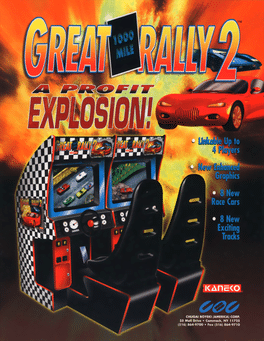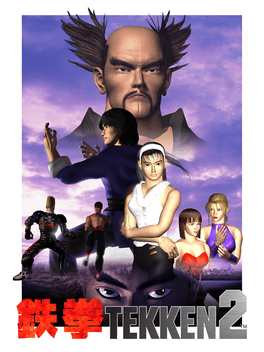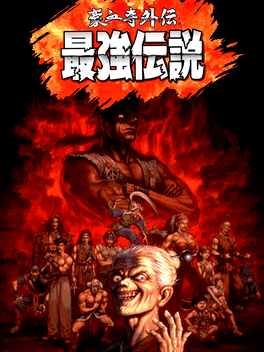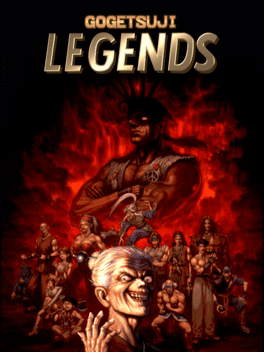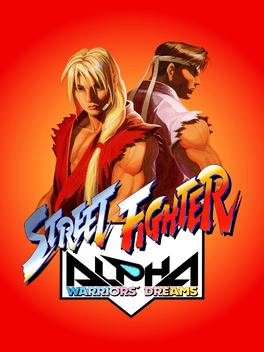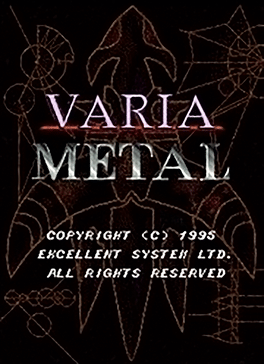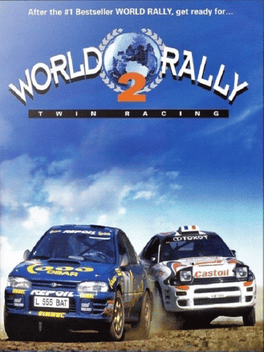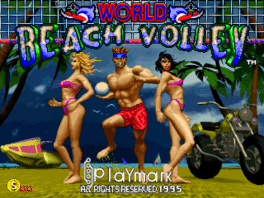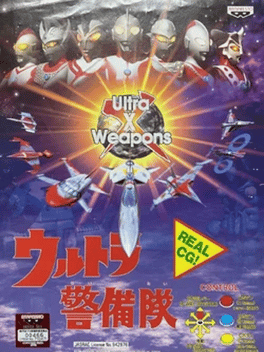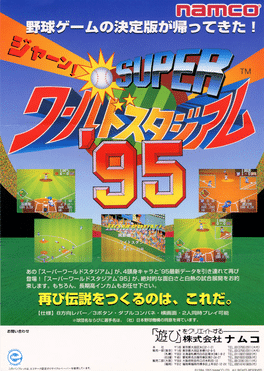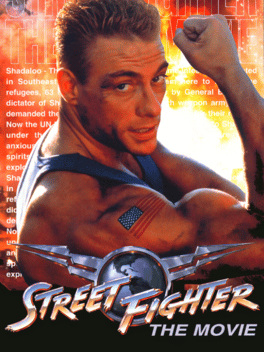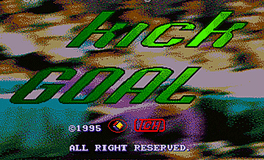New Arcade Games - Page 62
-
VR Virtua Racing
1995
-
Pang! 3
1995
Pang! 3
1995
Your character is locked inside an art museum and has to avoid bouncing balloons of various sizes, most of which split when hit. The player has the option of "normal" play with stages or "panic" mode in which balloons will appear continuously. In normal mode, watch out for characters like birds and dogs that will paralyze your character. -
Mille Miglia 2: Great 1000 Miles Rally
1995
Linkable up to 4 players. New enhanced graphics. 8 new race cars. 8 new exciting tracks! -
Tekken 2
1995
Tekken 2
1995
star 8.3Tekken 2 is the second game in the Tekken series, it made various improvements over its predecessor in terms of graphics and features. All the characters from Tekken returned and eight new characters were added to the character roster along with new moves and combos. -
Power Instinct Legends
1995
Otane Goketsuji, leader of the Goketsuji clan, was kidnapped. A new tournament was held to find a successor. Otane managed to arrive at the tournament to defend her title as clan leader against the winner of the tournament. Unfortunately to Otane, she was too tired to fight and was defeated by Kokuin Kanji! After his victory in the Goketsuji tournament, Kanji thought that would be fun to test the strength of the Goketsuji family members, so he invited them for a new tournament. -
Gogetsuji Legends
1995
Gogetsuji Legends
1995
Gogetsuji Legends is an arcade game offshoot of the series released after Power Instinct 2. It introduced the 2 character battle system and the first character not related to the to the Gouketsuji bloodline in the series. The game's 2v2 battle system was added as Tag Battle in Power Instinct 2's PlayStation version but, unlike current tag battle games, characters cannot be swapped during the fight. The first selection is the Leader and the second is the Partner, the Partner is used for the first round and if lost they are replaced by the Leader, health is restored for the next round. The game has a 17 character starting roster, though 2 were previously character transformations and 1 can only be used as a Partner. -
Viper Phase 1
1995
Viper Phase 1
1995
By the year 2050, mankind begins the colonization of multiple solar systems in search for habitable planets. However, while the colonists establish original cultures and scientific studies, many of them began feuding with each other and battles broke out among them and the Earth. One rebel faction in particular rose to great power and made Earth their primary target. Earth's response was Operation Viper Phase 1: to combat the rebels using advanced space fighters built from downed enemy ships. -
Street Fighter Alpha: Warriors' Dreams
1995
star 7.1Street Fighter Alpha: Warriors' Dreams was the first all new Street Fighter game produced by Capcom since the release of Street Fighter II. It introduces several new features, expanding on the Super Combo system previously featured in Super Street Fighter II Turbo with graphics drawn in the same animated style Capcom employed in Darkstalkers. Street Fighter Alpha revamps the Super Combo system introduced in Super Street Fighter II Turbo by adding a three-level Super Combo gauge that fills in as the player performs regular and special moves. -
Varia Metal
1995
Varia Metal
1995
Varia Metal is a 2D arcade vertical scrolling shoot 'em up. In the 25th century, the evil Ocayea Empire is threatening, and two brave warriors have emerged to fight for freedom. Gameplay is very generic and straightforward - the player flies forward, and shoots at enemies and bosses.He can collect power-ups - green balls that increase your fire-power. He can use a special, destructive shot - you must hold your fire for a moment, to load the laser. The game has multi-player mode, where the first player controls the man (Grey), & the second player the girl (Atuja) - Varia Metal hasn't got a selection screen. -
World Rally 2
1995
World Rally 2
1995
There are four skill levels in this worldwide race: easy, normal, hard, and expert. There are three races held in each country. The game has good quality graphics with fast scrolling. -
World Beach Volley
1995
-
Ultra X Weapons
1995
Ultra X Weapons
1995
An Ultraman vertically scrolling shooter where you have to fight strange looking monsters. You play as one of the Defense Teams, defending the Earth from various Kaiju and aliens. At certain points, you can summon an Ultra Warrior to help you in this top down shooter. -
Twin Qix
1995
-
Street Fighter: The Movie
1995
Based on the film that's an adaptation of the Street Fighter franchise. Street Fighter: The Movie is a 2D, one-on-one fighting game that utilizes digitized graphics. You have a selection of 16 playable characters, 14 are immediately available and two are hidden. The roster mostly contains the familiar Street Fighter cast, even including some that are not in the film, such as Akuma. In addition, some characters are exclusive to this very game such as Sawada and Blade. This game is not to be confused with the home ports of Street Fighter: The Movie and it and the Arcade version are regarded as separate games. While the home ports use assets contained in the Arcade original, the stages and overall gameplay are different. The Arcade original features more experimental mechanics, whereas the home ports contains more traditional Street Fighter gameplay, mostly in the vein of Super Street Fighter II Turbo. -
Action Hollywood
1995
Action Hollywood
1995
Action Hollywood is a top-view hack and slash arcade game released by TCH in 1995. Gameplay is similar to "Gauntlet." You can choose to start at a Hollywood shoot set in "Temples of Chaos," "Excaliwood," "Transilvania" or "Galaxy War." -
Mad Donna
1995
-
Kick Goal
1995
-
Gekirido
1995


